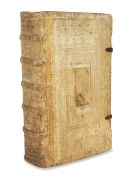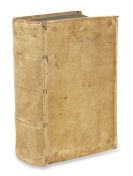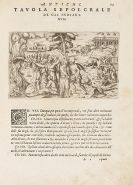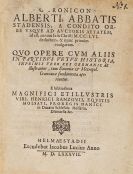
Bartholomäus Spranger
Antwerpen
1546 -
Prag
1611
The Flemish painter and etcher Bartholomew Spranger began serving an apprenticeship in 1557 under the landscape painters Jan Mandyn, Frans Mostaert and Cornelis van Dalem. After finishing it, Spranger taught himself the sophisticated formal idiom of Mannerism by copying engravings after Frans Floris and Parmigianino.
In 1565 Spranger went to Paris and on to Milan via Lyon. There he learned the techniques of fresco painting. In early spring 1566 Bartholomew Spranger went to Parma, where he worked on the dome frescoes in S. Maria della Steccata under the supervision of Bernadino Gatti. From Parma Spranger went that same year to Rome. There Cardinal Alessandro Farnese became an important patron of Spranger's, providing him with work and lodging from 1567.
Bartholomew Spranger soon attained universal recognition in Italy. In 1570 he was appointed painter to the Vatican by Pope Pius V and moved into accommodation at the Vatican. Following the death of Pius V, Spranger remained in Rome but was summoned to the Viennese court of the Emperor Maximilian II in 1575 and six years later to the court of the Emperor Rudolf II in Prague.
From the early 1580s engravings were made after compositions by Bartholomew Spranger. This attests to his fame and, at the same time, ensured that his work circulated widely. Spranger exerted a crucial influence on the younger generation of painters at the Prague court as well as German, Flemish, Dutch and French art. In 1584 Bartholomew Spranger was appointed painter to the court and in 1588 he was given a coat of arms and the title of vassal. He was elevated to the peerage in the mid-1590s in recognition of his achievements.
Travels through Germany and the Netherlands in 1602 represented a triumphal procession for Spranger. No pictures are extant from Spranger's last years. On 11 January 1611 Bartholomew Spranger signed his will. He died a rich man. Spranger is regarded as the paramount master of Romanism. His œuvre comprises mythological and allegorical pictures as well as erotically tinged scenes in the Mannerist style. Bartholomew Spranger's importance to art history consists in his successful assimilation of Italian and Netherlandish models to form a distinctive Romanist personal idiom.
Would you like to sell a work by Bartholomäus Spranger?
Infos for seller







